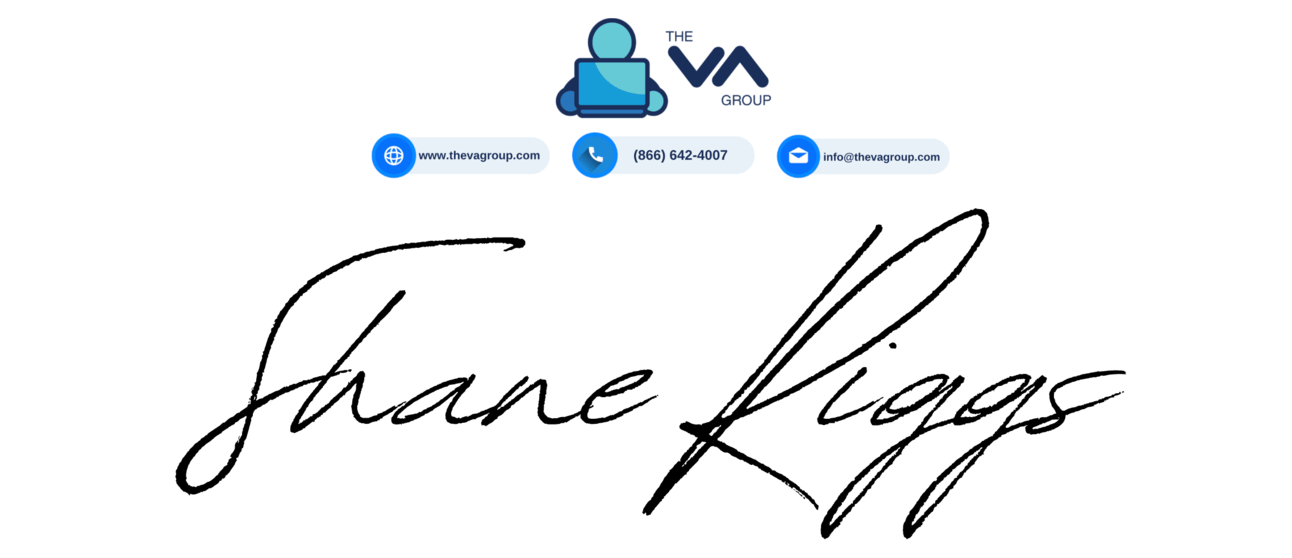- The VA Group
- Posts
- Beyond Metrics: Measuring the True ROI of AI + Virtual Assistants
Beyond Metrics: Measuring the True ROI of AI + Virtual Assistants
The $75K Question That Nearly Ended Everything

BEYOND VIRTUAL
A few months ago, I almost lost one of our biggest clients. And the reason might be the one you’d least expect. It’s not because of poor work quality or missed deadlines, but rather it’s because of a spreadsheet.
This client called me into a meeting, sent an email with a spreadsheet attached, and said, "Shane, this doesn't look good. We're spending $75K annually on AI tools and enhanced VA services, but I'm only seeing a 12% cost reduction in our operational budget."
I stared at those numbers, feeling my stomach drop. On paper, it looked terrible. But I knew something he didn't.
Three weeks earlier, their AI-enhanced VA caught a compliance issue that would have cost them $400K in fines. The month before that, our automated client research prevented them from pursuing a dead-end partnership that would have wasted six months and $200K.
None of that showed up in his spreadsheet.
The problem with measuring AI+VA ROI isn't the technology. It's that we're using the wrong measuring stick.
Here's what I've learned after tracking ROI for AI implementations: the companies that focus only on traditional metrics miss the biggest returns. The ones that get it right are measuring things most people don't even think to track.
Feature Story
ARUN CHANDRASEKARAN: WHY GARTNER'S ROI FRAMEWORK CHANGES EVERYTHING

One of the best finds I came across was Arun Chandrasekaran 's work at Gartner from the past year, and his insights on AI ROI measurement are revolutionary. While everyone else talks about simple cost savings, he's focused on something much more important: portfolio value.
Chandrasekaran's April 2024 prediction that by 2027, more than 50% of GenAI models used by enterprises will be specific to either an industry or a business function will be more than just a tech forecast. It will also serve as a roadmap for ROI measurement.
Here's what that means for us:
The Three-Layer ROI Model
Layer 1: Direct Cost Impact
Task completion speed
Error reduction rates
Training time savings
This is what most people measure. It's important, but it's just the beginning.
Layer 2: Productivity Multiplication
Revenue per VA hour
Client capacity expansion
Service quality improvements
This is where the real money is. When your VA can handle 3x more clients at the same quality level, it’s safe to say that it’s an exponential growth.
Layer 3: Strategic Value Creation
Competitive advantage development
Market opportunity identification
Risk prevention and mitigation
This is what my client’s spreadsheet missed. Gartner emphasizes measuring both financial ROI and nonfinancial benefits, such as competitive advantage across your Generative AI portfolio.
The Hidden ROI Most Companies Miss
Chandrasekaran's research shows that successful AI implementations create compound value. Doing things that you couldn’t do before, while also being able to do the prior ones faster.
If you had a client whose AI-enhanced VA started identifying patterns in customer complaints that revealed a product design flaw, and the fix prevented thousands of returns and improved customer satisfaction by 40%. How do you put that in a traditional ROI calculation?
In 2024, nearly three-quarters of organizations reported that their most advanced AI initiatives, particularly generative AI outputs, are meeting or exceeding ROI expectations. Yet, paradoxically, roughly 97% of enterprises still struggle to demonstrate business value from their early AI investments.
That gap? It's the measurement problem.
"The key isn't measuring AI ROI like traditional IT investments. It's measuring it like a business transformation initiative."
Read more: Gartner's AI ROI Assessment Framework
Visionary Voices
THE MICROSOFT IDC STUDY: THE 10X MULTIPLIER EFFECT
IDC's 2024 AI opportunity study revealed something remarkable: for every $1 a company invests in generative AI, the average ROI is 3.7x. However, the top leaders using generative AI are realizing an ROI of 10.3x! And there’s no denying generative AI’s effectiveness. Just look at how big the difference is.
And the factors that separate the $10.3 performers from the $3.7 ones are not better technology, but rather better measurement and optimization.
The study shows that AI deployments are taking less than 8 months and organizations are realizing value within 13 months. Within 24 months, most organizations plan to scale their AI investments significantly.
But here's what caught my attention: the highest-performing companies track what they call "human amplification metrics"—measurements that show how AI enhances human capabilities rather than replacing them.
This is exactly what we see with AI-enhanced VAs. The best results don't come from just the automation. They also come from augmentation.
The Top Performers Track These Metrics:
Decision Quality Improvement: How much better are the decisions made with AI assistance?
Learning Acceleration: How fast do VAs improve when AI handles routine tasks?
Client Relationship Depth: How much more strategic can VAs become when AI handles tactical work?
Innovation Capacity: What new services become possible with AI-enhanced capabilities?
I've started implementing these metrics with our clients. The results? Companies that track human amplification alongside traditional cost metrics see 3x better long-term ROI.
The insight that changed everything for me: AI ROI isn't about replacing human costs. It's about multiplying human value.
Read the full study: IDC's 2024 AI Opportunity Study
The Trend
THE FRAMEWORK THAT MEASURES BEYOND THE STANDARD METRICS

Believe it or not, a lot of business owners have been tracking the wrong things for years (myself included). Cost per task, time saved, and basic productivity metrics. And after a rigorous research marathon, I’m sure now that the standard measuring metrics do not apply to this.
The difference wasn’t better tools or smarter VAs, but rather measuring the right things in the right sequence.
Sample Of An Effective ROI Measurement Framework:
Phase 1: Rapid Gains Measurement
Time saved per standard task
Error reduction percentages
Training time decreases
Phase 2: Productivity Multiplication
Revenue per VA hour improvements
Client capacity increases
Service quality score improvements
Phase 3: Strategic Value Creation
Competitive advantage development
New service capability creation
Risk mitigation value
Phase 4 (Ongoing): Compound Benefit Tracking
Cross-project value creation
Skill development acceleration
Market opportunity identification
The Numbers That You SHOULD Measure:
Instead of just tracking "cost per task," successful companies measure:
Value per hour (revenue generated, not just costs saved)
Quality multiplier (how much better are the outcomes?)
Capacity expansion (how much more can we handle?)
Strategic contribution (what new opportunities are created?)
“But Shane, this is too tedious! There’s a lot to track, and I don’t have the budget to pay for the premium software to track these!”
Good news! These metrics can be tracked with affordable and reliable tools. Time and productivity tracking? We got Jibble. Quality and accuracy measurement? Notion is a good choice. Financial impact calculations? Quickbooks is an excellent choice to start. Lastly, strategic value detection and surveys are your friends on this.
A Final Note
That client who almost fired us? Months later, he called me back. Not because the spreadsheet numbers looked better, but because he finally understood what we were measuring.
His compliance issue prevention saved $400K. The avoided bad partnership saved $200K and six months. The improved client relationships led to $800K in new business.
His actual ROI? Bigger than he expected… way bigger! And I’m not exaggerating.
The lesson: The most valuable AI+VA returns don't show up in traditional cost accounting. They show up in opportunities created, problems prevented, and capabilities unlocked. The companies winning with AI+VAs aren't the ones with the lowest costs. They're the ones measuring the right value creation.
Speaking of winning, our 3rd Annual President’s Club has recently concluded and it was nothing short of magical.
This wasn’t just a celebration, it was a tribute to the powerhouse Virtual Assistants and backend Directors who keep this engine running.
Your dedication, loyalty, and hustle are what make The VA Group world-class.I’m beyond proud to lead this team.
Here’s to more growth, more wins, and more nights like this.Let’s keep building. Together.
Next issue, we're diving into something we can’t ignore: "What does the future look like for AI and VAs?" because knowing the value is just the beginning.
Until next time,

